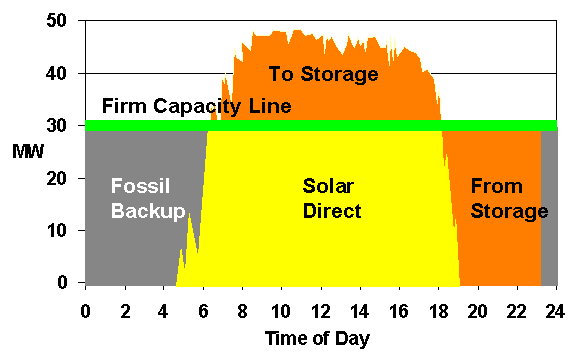Editor’s Note: Though Ramadan is drawing to a close, but this is very interesting and highly informative
How can a solar alarm clock wake me up for suhoor, I thought when I saw an online ad for one. It was shortly before the beginning of Ramadan and the importance of waking early for suhoor was running through my mind.
Suhoor is the meal taken in the dark hour before dawn prior to fasting. If solar technology relies on sunshine to produce electricity, how could it work at night, I wondered.
Abu Sa’eed Al-Khudri related: The Messenger of Allah (peace and blessings of Allah be upon him) said, “Suhoor is a blessed meal, so do not omit it even if one of you only takes a sip of water. For Allah and His angels send blessings on those who eat suhoor.”
From Sundial to Solar Alarm Clock
Muslims’ prayer times were established according to the sun’s position in the sky. So it seems logical to develop a solar-based technology for telling the time.
Such needs were the rationale behind inventing sundials since ancient times, but the limitations are obvious during the night and on cloudy days.
Nights and cloudy days also limit present-day solar technologies. However, as solar energy is converted into a direct current of electricity, rechargeable batteries resolve this limitation, storing electricity for dark and shady hours.
All forms of solar technology are optimized through storage technologies, including solar alarm clocks that can wake us up in time for suhoor.
Historical Harnessing of Solar Energy
Technologies that convert sunlight into electricity are known as photovoltaics (PV). In these technologies, certain materials absorb photons of light and release electrons. This is called the photoelectric effect.
When the released electrons are channeled, electricity runs in a direct current (DC): the same form of energy that is stored in batteries.
French physicist Edmund Becquerel first observed the photoelectric effect in 1839.
In 1905, Albert Einstein further documented the effect, winning a Nobel Prize in physics for his work. Finally, Bell Laboratories developed the first solar photovoltaic battery in 1954.
Although this first photovoltaic breakthrough was too expensive for practical use, the space industry adopted it in the 1960s. Using solar PV technology to generate electricity aboard spacecraft, progress steadily continued.
Solar technology further gained an economic foothold for commercial use during the oil shortages of the 1970s.
Solar Energy at Atomic Level

Stored solar energy provides a firm capacity of 31 Megawatts (MW) until midnight at which time fossil fuel backup us used.
A basic photovoltaic cell, or solar cell, is a wafer-thin disc made from a semiconductor material, such as silicon, specially treated to generate an electric field.
The cell is positive on the one side and negative on the opposite. When it is exposed to sunlight, the silicon or other semiconductor material jolts electrons loose.
Electrical conductors are attached to both the positive and negative sides of the disc. An electrical circuit occurs and a current of solar energy is converted into electricity.
Numerous solar cells can be electrically connected together to harness greater amounts of solar energy depending on the amount of electricity needed.
Multiple connected solar cells form a photovoltaic module or solar panel. Multiple connected modules form a solar array.
Solar modules are engineered to supply electricity at a specific voltage, commonly 12 volts.
This facilitates solar energy storage into batteries that are similar in size to car batteries.
Of course, solar alarm clocks don’t need a big battery. In fact, a rechargeable standard-sized AA battery is sufficient.
During the day, as sunlight strikes the solar cells on the clock’s surface, enough electricity is generated to run the clock and to also recharge the AA battery for use during the night or during cloudy days.
Rechargeable batteries for solar applications are common in the marketplace and typically last several years.
Thus, the use of a solar-powered alarm clock can be appreciated as an interesting and innovative way to ensure we wake up in time to eat suhoor and receive the blessings for it in Ramadan.
Recalling Black & White Threads of Time
Without an alarm clock, how did the believers in the time of the Prophet manage to wake up in time to eat? Without even a clock, how did they manage their time at all?
Knowing the correct time of fajr, or early dawn, was accomplished according to the following verse of the Holy Qur’an: {…and eat and drink until the white thread becometh distinct to you from the black thread of dawn..} (Surat Al-Baqarah 2:187).
Al Bukhari (#1917) and Muslim (#1091) report that the Prophet’s companion Sahl bin Sa`d explained that the words “of dawn” weren’t included in this verse when it was first revealed. “When the following verse was revealed ‘Eat and drink until the white thread appears to you distinct from the black thread’ and ‘of dawn’ was not revealed [with it], some people who intended to fast tied black and white threads to their legs and went on eating till they differentiated between the two. Allah then revealed the words ‘of dawn’ and it became clear that meant night and day.”
Electricity, clocks and other technological advances have made our lives so much more convenient these days. The degree of faithful devotion displayed by our earliest Muslim brothers and sisters despite a lack of present-day technologies is worthy of reflection.
